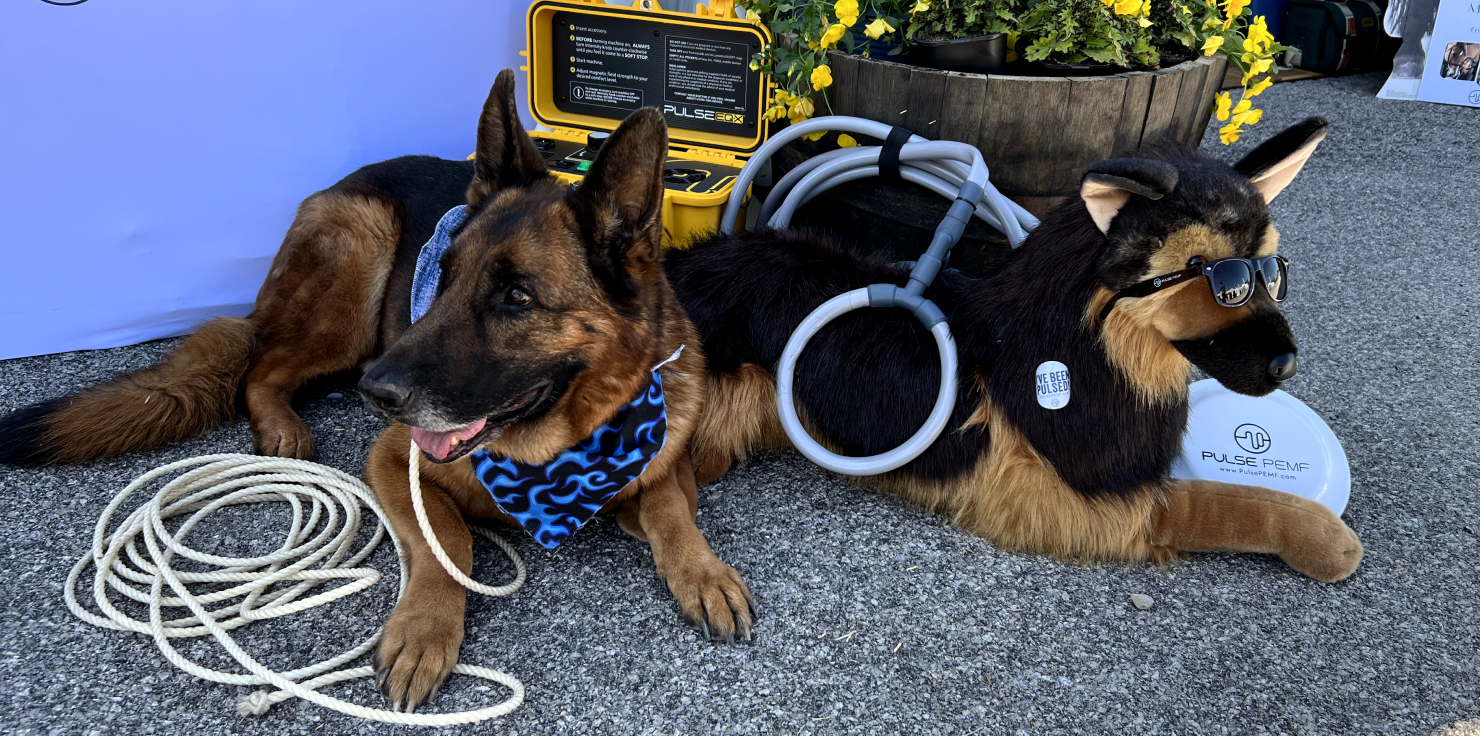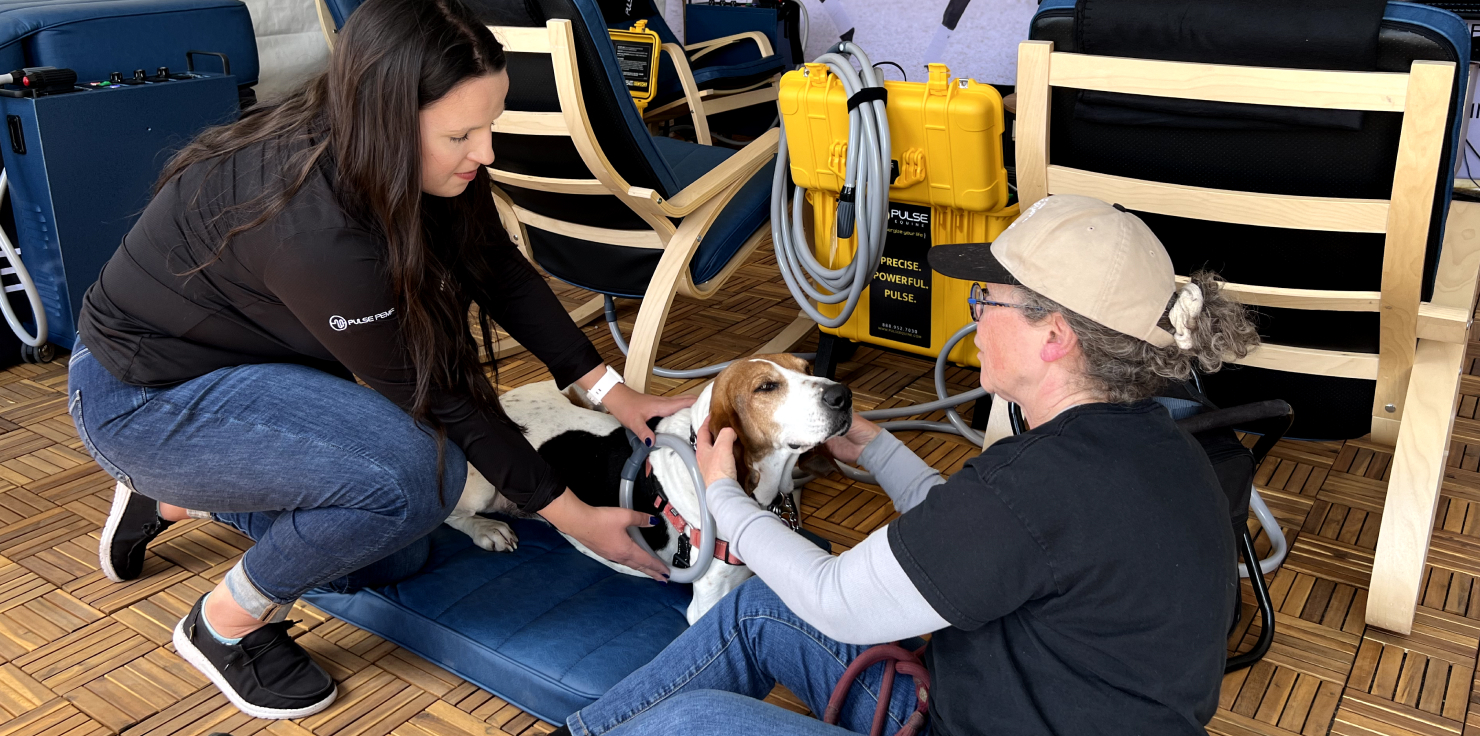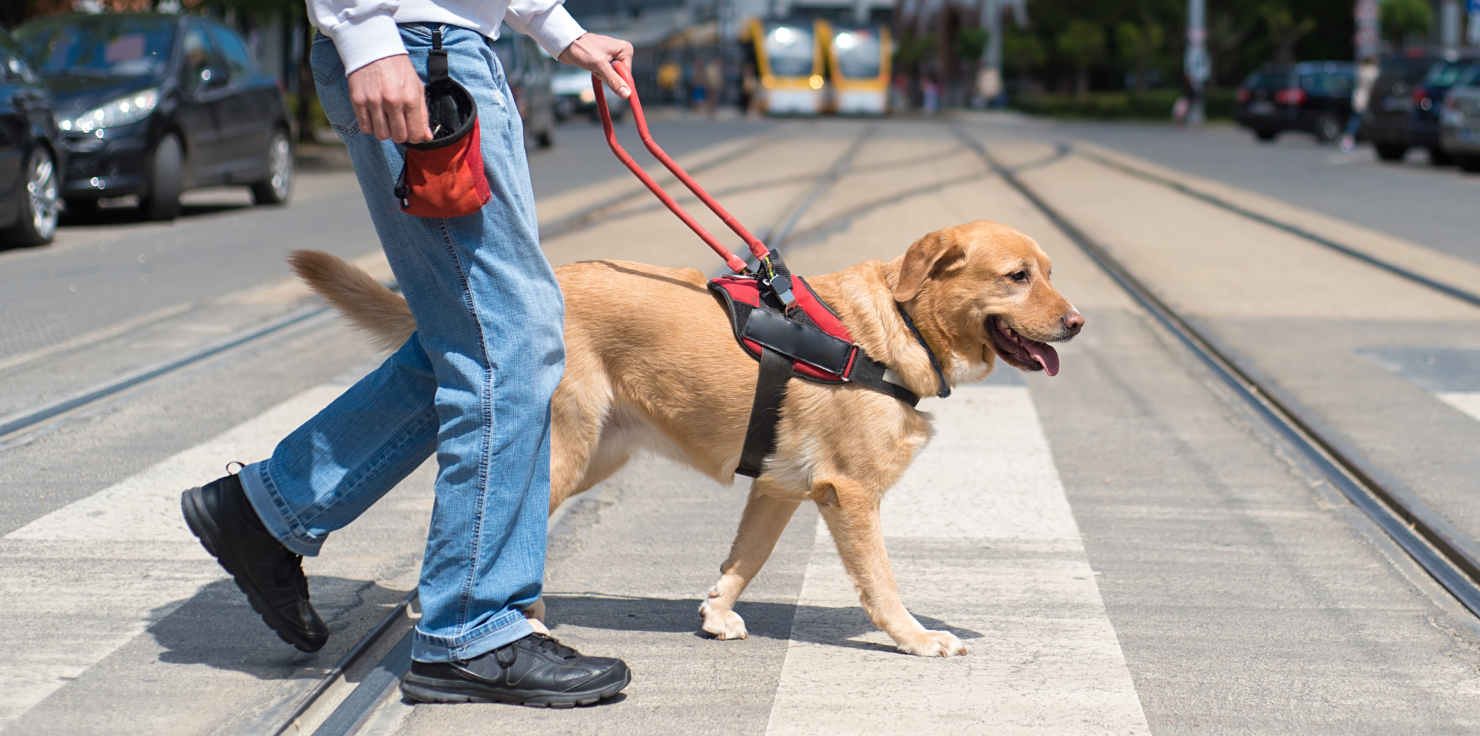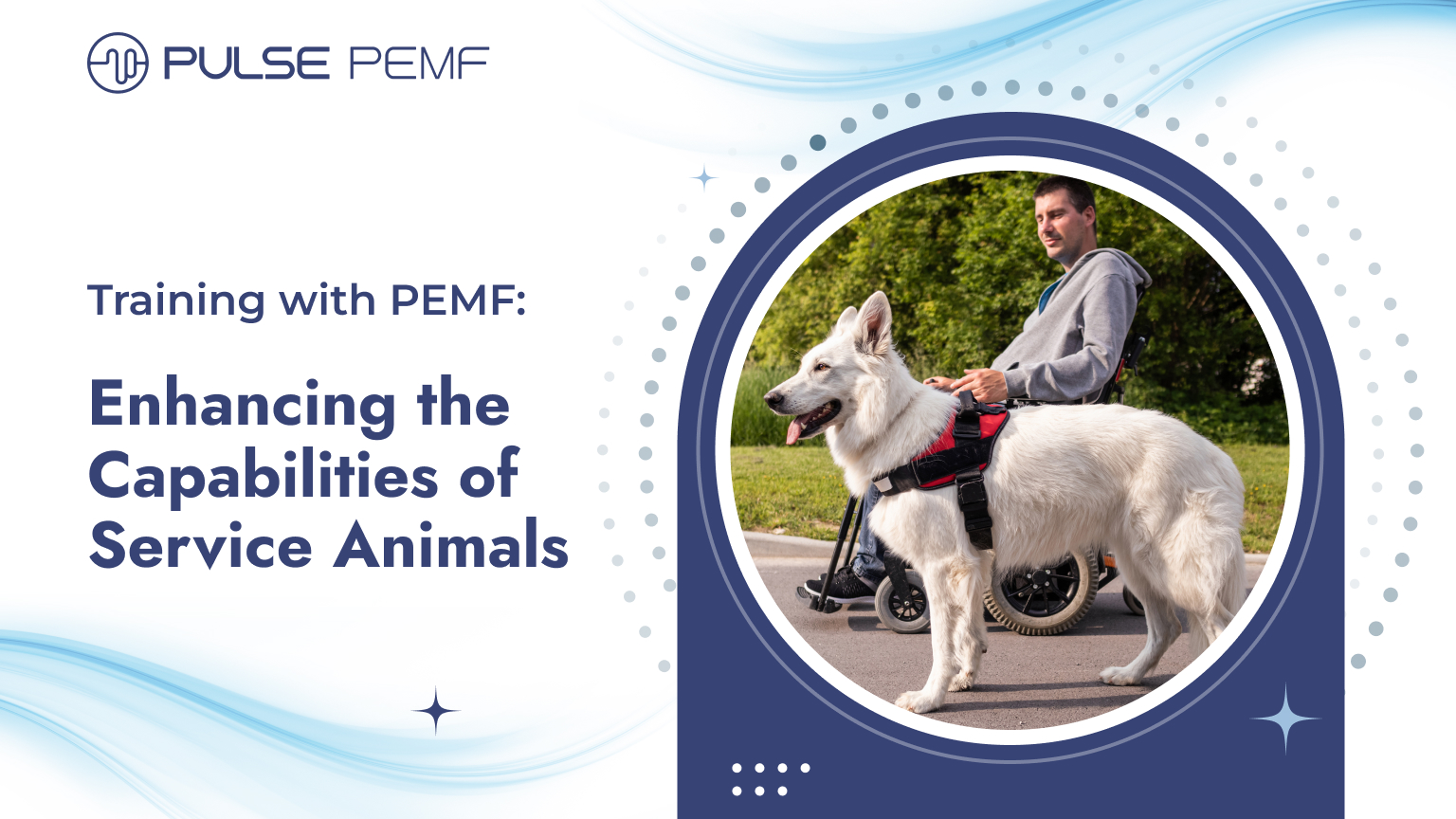Service animals play a vital role in assisting individuals with disabilities, providing invaluable support and companionship. PEMF therapy has emerged as a proven tool in animal care, with numerous benefits for their overall health and well-being.
In this blog post, we’ll explore practical ways to integrate PEMF therapy into your service animal training regimen to enhance their performance and ensure they remain healthy and capable.
The Demands on Service Animals
Physical and Mental Challenges
Service animals perform a wide range of tasks, from assisting with mobility to providing emotional support. These tasks often place significant physical and mental demands on the animals.
Physical challenges may include:
- Mobility assistance: Assisting individuals with walking, standing, or transferring.
- Retrieving items: Retrieving dropped items or opening doors.
- Providing support: Providing physical and emotional support during stressful situations.
Mental challenges may include:
- Maintaining focus: Staying focused on tasks in various environments.
- Responding to commands: Quickly and accurately following commands.
- Managing stress: Coping with stressful situations, such as loud noises or unfamiliar environments.
Importance of Comprehensive Care in Training
To ensure service animals are equipped to meet these challenges, it’s crucial to address both their physical and mental well-being during training. A comprehensive approach can help:
- Prevent injuries: By addressing physical limitations and preventing overuse.
- Improve performance: By enhancing mental focus and emotional stability.
- Support long-term health: By ensuring the animals are physically and mentally healthy.
By prioritizing comprehensive care, you can help your service animals perform their duties effectively and maintain a high quality of life.
Integrating PEMF Therapy into Service Animal Training

Complementing Physical Conditioning
PEMF therapy can be used in conjunction with physical training exercises to enhance the benefits of both.
To optimize results, consider timing PEMF sessions to coincide with your service animal’s training regimen. For example, you might use PEMF therapy after a particularly demanding training session to aid in recovery or before a training session to reduce anxiety.
Enhancing Mental Focus and Calmness
PEMF therapy may also be beneficial for improving your service animal’s mental focus and calmness. Consider using PEMF therapy before or after training sessions to help your service animal stay calm and focused.
Supporting Recovery and Overall Wellness
By supporting the body’s self-healing abilities at the cellular level, PEMF therapy can be an invaluable tool for supporting recovery and the overall wellness in service animals. Incorporate PEMF therapy into your service animal’s routine to help them maintain optimal health and performance.
Implementing PEMF Therapy in a Training Program
Working with Trainers and Veterinarians
To create a customized PEMF therapy plan for your service animal, it’s essential to collaborate with both trainers and veterinarians. Their expertise can help ensure that PEMF therapy complements the training program and addresses specific needs.
Guidelines for collaboration:
- Assess individual needs: Work with your veterinarian to identify your service animal’s specific health needs and goals.
- Develop a customized plan: Create a PEMF therapy plan that aligns with the training program and addresses identified needs.
- Monitor progress: Track your service animal’s progress to assess the effectiveness of PEMF therapy.
Monitoring Progress and Adjusting the Routine
To maximize the benefits of PEMF therapy, it’s important to monitor your service animal’s progress and adjust the routine as needed.
Strategies for monitoring progress:
- Observe behavior changes: Look for improvements in focus, calmness, and overall performance.
- Track physical changes: Monitor for increased mobility or faster recovery.
- Consult with your veterinarian: Get regular feedback from your veterinarian on your service animal’s health and progress.
Tips for adjusting the routine:
- Increase or decrease frequency: Adjust the frequency of PEMF sessions based on your service animal’s response.
- Modify session duration: Experiment with different PEMF session durations to find what works best.
- Target specific areas: Focus the PEMF on areas that require particular attention.
Educating Handlers and Caregivers

Providing resources and training for handlers on the effective use of PEMF therapy is essential for maximizing its benefits. Ongoing education can help:
- Ensure proper usage: Teach handlers how to use PEMF therapy equipment correctly.
- Understand benefits: Educate handlers on the potential benefits of PEMF therapy for service animals.
- Monitor progress: Guide handlers on how to monitor their service animal’s response to PEMF therapy.
By educating handlers and caregivers, you can ensure that PEMF therapy is used effectively to support your service animal’s training and well-being.
The Future of Service Animal Training with PEMF
Emerging Trends and Technologies
The field of animal care is constantly evolving, with new technologies and therapies emerging all the time. As PEMF therapy continues to gain popularity, we can expect to see further advancements in this area.
Future trends may include:
- Enhanced PEMF technology: More advanced PEMF devices with customizable settings and targeted applications.
- Integration with other therapies: Combining PEMF therapy with other complementary treatments, such as acupuncture, for even greater benefits.
Long-Term Benefits for Service Animals

By incorporating PEMF therapy into your service animal training program, you can help ensure their long-term health and performance. The potential long-term benefits of PEMF therapy include:
- Improved recovery: Reduced discomfort and improved general relaxation.
- Enhanced performance: Increased focus and stamina.
- Support of overall wellness:: Proactive measures to maintain optimal health.
Adopting a holistic approach to service animal training that includes PEMF therapy can help your service animals lead healthier, happier, and more fulfilling lives.
Conclusion
By incorporating PEMF therapy into your service animal training program, you can provide your furry companion with the best possible care and support. Remember, every service animal is unique, so it’s important to work closely with your veterinarian and trainer to develop a customized plan that meets your animal’s specific needs.
Want to learn more about PEMF therapy and its applications for animals? Visit our website to explore how PEMF can benefit your service animal’s health and performance.
By integrating PEMF therapy into your service animal training routine, you can help ensure your furry companion is equipped to provide invaluable assistance and companionship for years to come!












